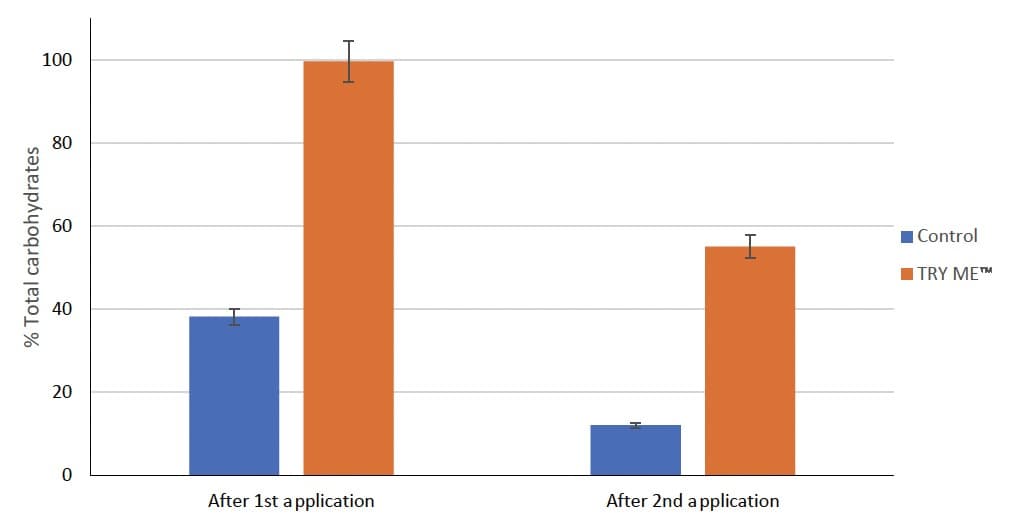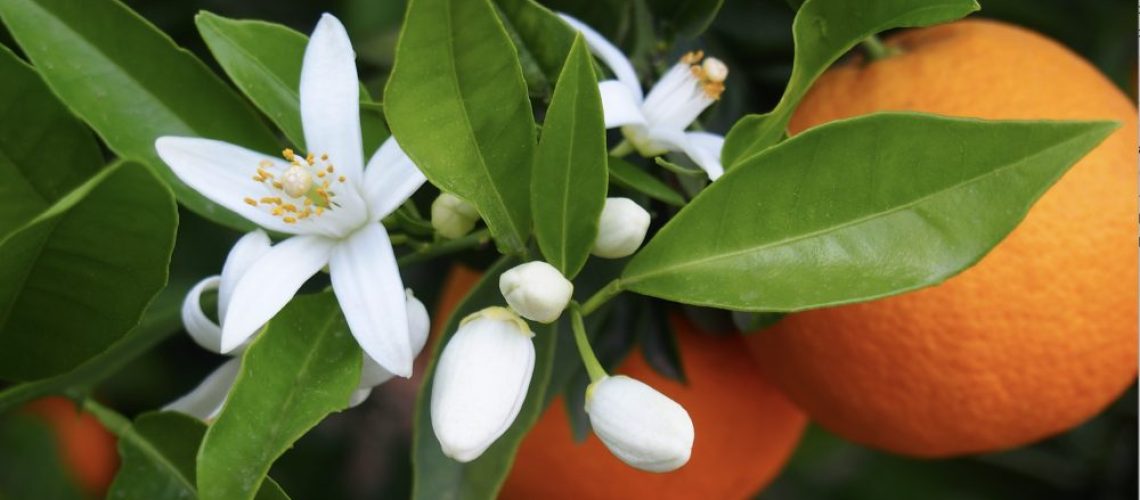Crop Carbohydrate status and MAJESTIC™
By Rochelle Thuynsma (Head of Products: Technical) and Dr. Elmi Lötze (Head of ITEST™CARBOHYDRATES and ITEST™LEAF)
Introduction
The carbohydrate status of a tree/organ is dependent on factors influencing photosynthesis in the leaves, the accumulation of sugars and starch in the leaves and the translocation of sugars towards the other sinks(1).
The majority of management practices on a farm are geared towards optimising light interception and distribution to optimise photosynthesis(2). Although all mineral elements play a role in photosynthesis, some elements (potassium, magnesium, phosphorous, nitrogen, zinc) play an even more crucial role in enzyme activities associated with photosynthetic biochemical functions(3).
Favourable carbohydrate status is essential for crop growth and development, as well as determining the suitability of the crop to produce adequate yield(3,4). Leaf carbohydrate status is important during demanding reproductive phenological stages where carbohydrates are translocated from the leaf to the developing flower and fruitlets(4).
Leaf carbohydrate status is also crucial for the partitioning of carbohydrates to the roots for growth and storage, ensuring a favourable energy status for the following year’s crop(3,4). In citrus, alternate bearing is partly due to a lack of available carbohydrate build-up during the previous production season and can lead to a reduction in crop yield(5).
Environmental and physiological stress conditions are the largest factors affecting photosynthetic rates under field conditions(6,7).
Prolonged environmental stress or high demand for mineral nutrients during reproductive and vegetative growth phases, leads to increased production of abscisic acid, which in turn signals stomatal closure(6). Stomatal closure limits the amount of CO2 available for photosynthesis, thus reducing the amount of carbohydrates produced and ATP (adenosine triphosphate) generated during non-cyclic C3 photosynthesis(7).
Prolonged stomatal closure also leads to the build-up of toxic reactive oxygen species in leaf tissue. ROS (reactive oxygen species) damages chlorophyll and other cellular components and needs immediate detoxification through the upregulation of various detoxification enzymes, as well as the production of compatible solutes(8).
The effect of MAJESTIC™ on foliar carbohydrate status MAJESTIC™ is a multi-elemental foliar product that supports plant metabolic function to naturally stimulate plant processes to alleviate the effects of stress and aid in returning favourable carbohydrate status within the plant.
MAJESTIC™ supports the production of various stress-alleviating compounds including pathways involved in amino acid, polyamine and stress-alleviating phytohormone production.
The organic base formulation of MAJESTIC™ also aids in supplying crucial carbon skeletons for metabolic intermediates as well as supplying a source of plant-available carbohydrates.
Application of MAJESTIC™ (Figure 1) to field grown macadamia trees resulted in a 100% increase in total carbohydrate content, 4 weeks after the first application.
Following the use of carbohydrates over another 4-week period, an application of MAJESTIC™ again ensured a more favourable carbohydrate status in trees, where decreased levels of carbohydrates were still 44% more when compared to the untreated control.

Figure 1: Change (Δ) in total leaf carbohydrates (%) as determined by ITEST™CARBOHYDRATES for field grown macadamia trees after two foliar applications of MAJESTIC™.
Conclusion
Various environmental and physiological conditions affect photosynthetic rates and thus available carbohydrates. Unfavourable carbohydrate status can negatively influence crop growth, development and final production. The application of MAJESTIC™ can favourably influence the foliar carbohydrate status of crops, ensuring sufficient carbohydrate supply to support growth and development.
The MAJESTIC™ formulation contains various minerals and organic components that contribute to stimulating the crop’s natural metabolic pathways to alleviate the effects of environmental and physiological stress conditions, resulting in an upregulation of photosynthesis and overall increase of the carbohydrate status of the tree after application. A timely application of MAJESTIC™ can mitigate stress conditions and support yield.
References:
1. Zhu, J., Gou, F., Rossouw, G., Begum, F., Henke, M., Johnson, E., Holzapfel, B., Field, S., Seleznyova, A. 2021.vSimulating organ biomass variability and carbohydrate distribution in perennial fruit crops: a comparisonvbetween the common assimilate pool and phloem carbohydrate transport models, in silico. Plants 3(2).
2. Pellegrino, A., Clingeleffer, P., Cooley, N., Walker, R. 2014. Management practices impact vine carbohydratevstatus to a greater extent than vine productivity. Frontiers in Plant Science 5.
3. Glanz-Idan, N., Wolf, S. 2020. Upregulation of photosynthesis in mineral nutrition-deficient tomato plants by reduced source-to-sink ratio. Plant Signal Behaviour 15(2):1712543.
4. Aluko, OO., Li, C., Wang, Q., Liu, H. 2021. Sucrose utilization for improved crop yields: A review article. International Journal of Molecular Sciences 22(9):4704.
5. Shalom, L., Samuels, S., Zur, N., Shlizerman, L., Zemach, H., Weissberg, M., Ophir, R., Blumwald, E., Sadka, A. 2012. Alternate bearing in citrus: changes in the expression of flowering control genes and in global gene expression in ON- versus OFF-crop trees. PLoS One 7(10): 46930.
6. Jeandet, P., Formela-Luboińska, M., Labudda, M., Morkunas, I. 2022. The role of sugars in plant responses to stress and their regulatory function during development. International Journal of Molecular Sciences 23(9):5161.
7. Yamada, K., Osakabe, Y. 2018. Sugar compartmentation as an environmental stress adaptation strategy in plants. Seminars in Cell & Developmental Biology 83: 106-114.
8. Schieber, M., Chandel, NS. 2014. ROS function in redox signalling and oxidative stress. Current Biology 24(10):R453-62.





